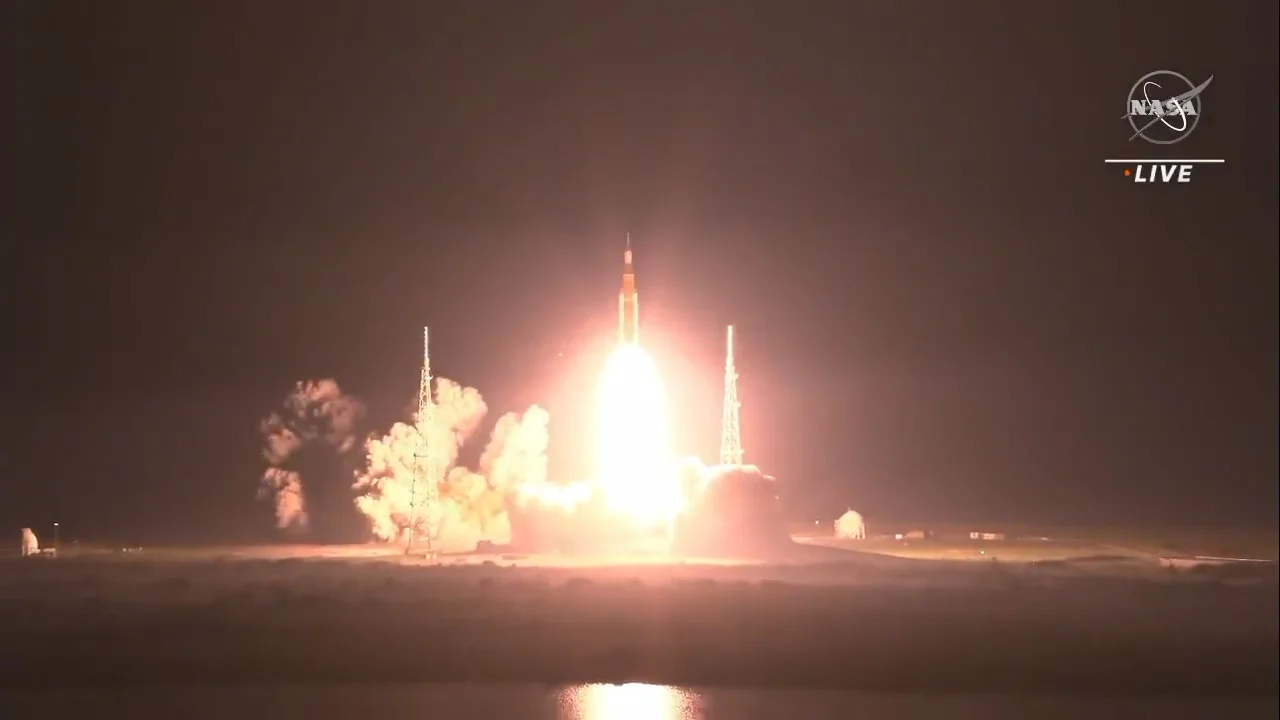
NASA successfully launches Artemis 1 towards the Moon!
If you stayed up late tonight, you were witness to a historic launch that will help put astronauts back on the Moon!
It's been nearly 50 years since humans last walked on the Moon, and NASA is finally going back! Artemis 1 successfully launched early Wednesday morning, and the Orion spacecraft is now on its way to lunar orbit.
At 1:47 a.m. EST, the Orion spacecraft and Space Launch System booster rocket lifted off from Kennedy Space Center's Launch Pad 39B.
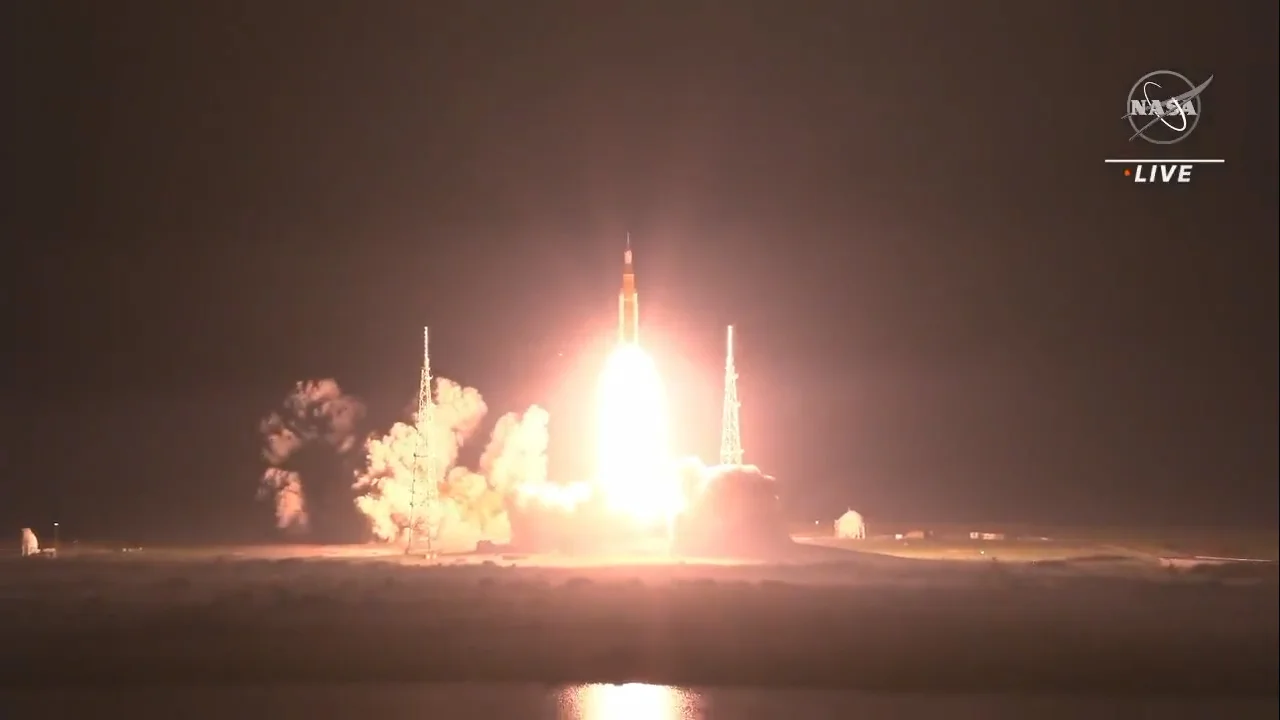
Artemis 1 blasts off from Launch Pad 39B, on Wed. Nov. 16, 2022. Credit: NASA
NASA's live coverage of the Artemis 1 lift off began at 10:30 p.m. EST. The lead-up to the launch did not go 100 per cent smoothly, though.
During the livestream, NASA discovered yet another hydrogen fuel leak on the mobile launching platform. The launch countdown was put on hold while a specially-trained "Red Crew" team was sent to the launch pad, making the dangerous approach to the still-fueled rocket to fix the leak.
After the Red Crew retreated from the pad, and even while we were waiting to see if the fuel leak was fixed, the Space Force 45th Weather Squadron reported that their radar station went down due to a faulty ethernet switch. Since this radar would have been used to track the splashdown of the Orion capsule in the event of a launch abort, they could not launch without it.
Then, just as the ethernet switch was repaired and the radar system restarted, it was found that a sensor on the rocket, which had been torn loose from the Orion capsule by the hurricane, would have a chance to actually come off during launch. However, as the launch pad team had previously decided that they could launch despite the issue with the sensor, they apparently decided to remove it from their list of launch concerns.
As all of these issues seemed to pile up on each other, and with the launch countdown still on hold at T-10 minutes, even as the 2-hour launch window opened, the optimism of seeing a launch last night appeared to wane.
However, at around 1:30 a.m. ET, about 26 minutes into the launch window, suddenly things began to move very quickly!
The NASA team said that the work to deal with all of the issues was complete!
Next, in a quick polling of the launch control managers had them all reporting that they were "Go for Launch"!
The countdown resumed at T-10 minutes to lift off!
Excitement built as the clock counted down, with launch commentators giving us a play-by-play of the steps taking place!
At T-0, the SLS rocket roared to life, lighting up the night as it blasted off, carrying Orion towards orbit!
A little more than 2 minutes after launch, the two solid rocket boosters on the side of SLS were spent. They separated and fell away to splash into the ocean. By eight minutes, the core SLS rocket had completed its job of boosting Orion out of the atmosphere. It cut its engines and shortly thereafter, Orion and the second stage of the rocket (the Interim Cryogenic Propulsion Stage or ICPS) released the booster, allowing it to fall back to Earth.
From there, with Orion in orbit, the spacecraft deployed its solar arrays for power, performed a 'perigee raising maneuver' to increase its distance from Earth, and then ignited its engine to thrust towards lunar orbit.
As of Wednesday morning, Orion is now on track for its 25-day trip to the Moon and back!
Canada's role in Artemis
"Today's launch of NASA's Artemis I mission is paving the way to send humans back to the Moon and beyond, marking the beginning of a new chapter in space exploration," the Honourable François-Philippe Champagne, Canada's Minister of Innovation, Science and Industry said in a statement. "Fifty years after the end of the Apollo program, humanity is going back to the Moon, and Canada is in the front seat of this thrilling journey."
"Canada is proud to play an important role in the Artemis program," Champagne added. "Under this historic initiative, a Canadian astronaut will be on board Artemis II as part of a crew set to travel to the Moon's orbit in 2024. This will mark the first time a Canadian travels to deep space."
Near-perfect launch weather
According to the US Space Force's 45th Weather Squadron, this was nearly perfect weather for a space launch. Quite the change from last week, when the rocket had to endure the landfall of category 1 Hurricane Nicole. From their forecast, there is a 90 per cent chance of favourable conditions for Artemis 1's two-hour launch window. With a cold front holding off to the west, over the Gulf of Mexico, the weather is expected to be calm.
"The front is expected to remain west of the area and too weak to otherwise impact local weather conditions across the Spaceport early Wednesday morning. As a result, excellent weather is expected during the primary launch window, with the Cumulus Cloud Rule being only a minor concern," they wrote in their forecast discussion. The "Cumulus Cloud Rule" is one launch safety criteria they use at Kennedy Space Center, to prevent a rocket from launching in conditions that would cause a lightning strike.
Read more: What happened when two bolts of lightning struck Apollo 12
What is Artemis 1?
Artemis 1 is an uncrewed test flight to the Moon and back. It leads the way as the first crew-ready spacecraft to visit the Moon since the Apollo 17 mission back in December of 1972.
The Orion capsule does not have any human passengers on this flight. However, it is a fully equipped mission, meant to pave the way for humans to return to the Moon on Artemis 2, and then land and explore the lunar south pole on Artemis 3.
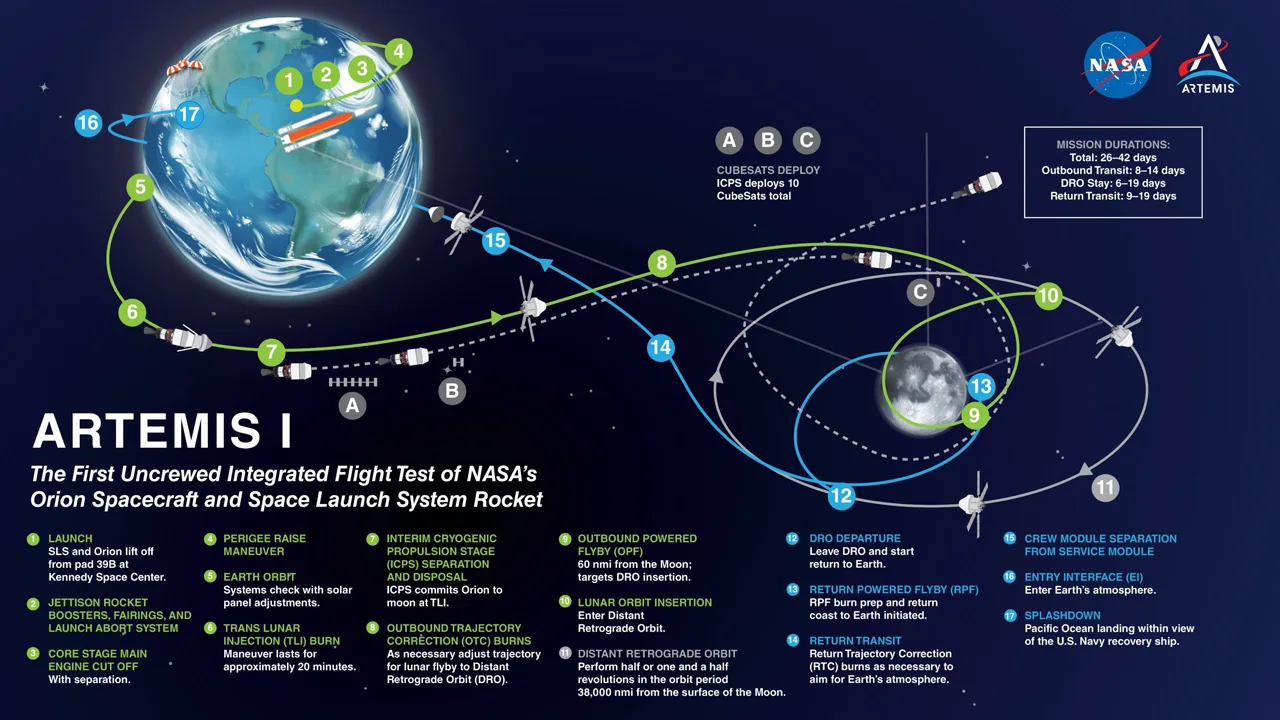
Artemis 1's flight path is detailed in this infographic. Credit: NASA
The Orion spacecraft isn't completely empty on its trip, though. The three seats in the capsule are occupied by specially designed mannequins, or Moonikins as they are being called.
Commander Moonikin Campos is outfitted with sensors to test the stresses that astronauts will endure on these flights. Meanwhile, two mannequin torsos, or 'phantoms', named Helga and Zohar, will return data on radiation exposure during the trip.
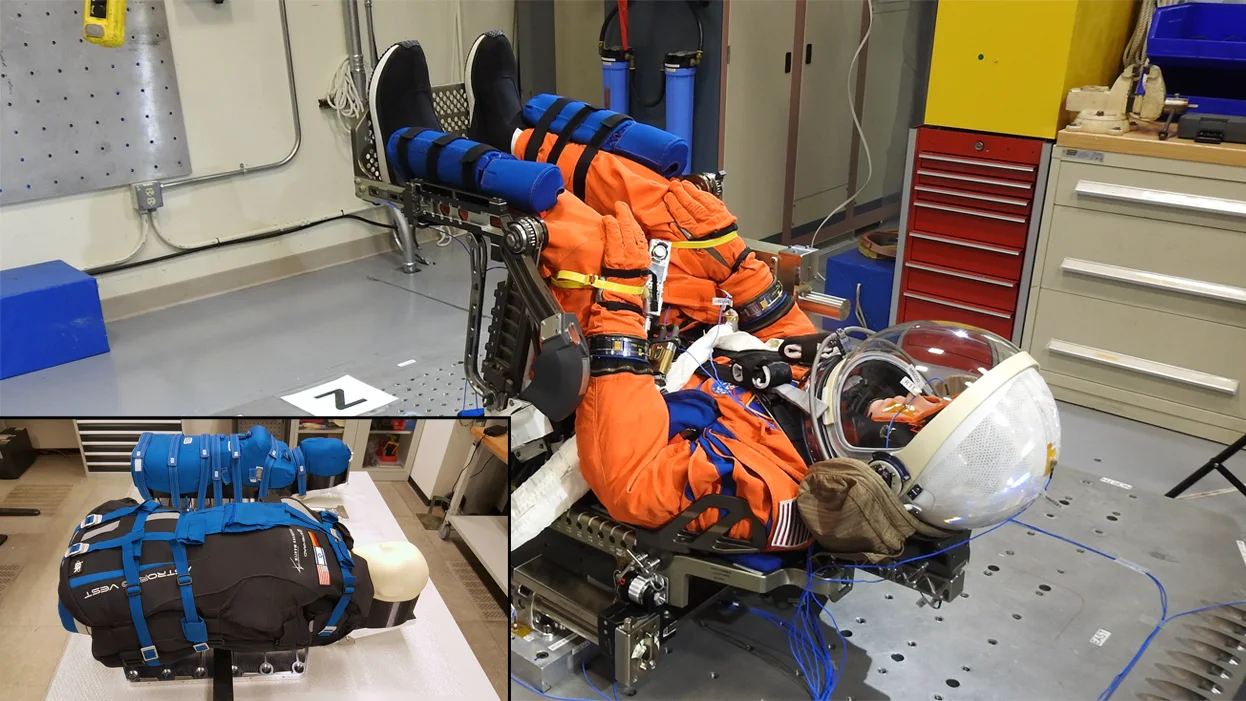
Test flight mannequin Commander Moonikin Campos sits in its flight suit ahead of the Artemis 1 flight. Inset, bottom right: the identical 'phantom' torsos, Helga and Zohar, will be fitted with more than 5,600 passive sensors and 34 active radiation detectors to measure radiation exposure as part of the MATROSHKA AstroRad Radiation Experiment (MARE). Credit: NASA
According to NASA, "Each of these purposeful passengers aboard Orion inform astronaut working conditions and safety, helping NASA and its partners better prepare for — and minimize — the potentially harmful effects from deep space missions for space travel farther from Earth, and longer in duration, than ever before."
These moonikins aren't going alone. Riding along with them is a small plush doll of Shaun the Sheep (of Wallace & Gromit fame) provided by the European Space Agency.
"As one of the first astronauts to fly an Artemis mission, Shaun is leading the way in lunar exploration, a great honour for our woolly adventurer!" Lucy Wendover, Marketing Director at Aardman, the animation studio that created Wallace & Gromit and Shaun the Sheep, said in an ESA press release.
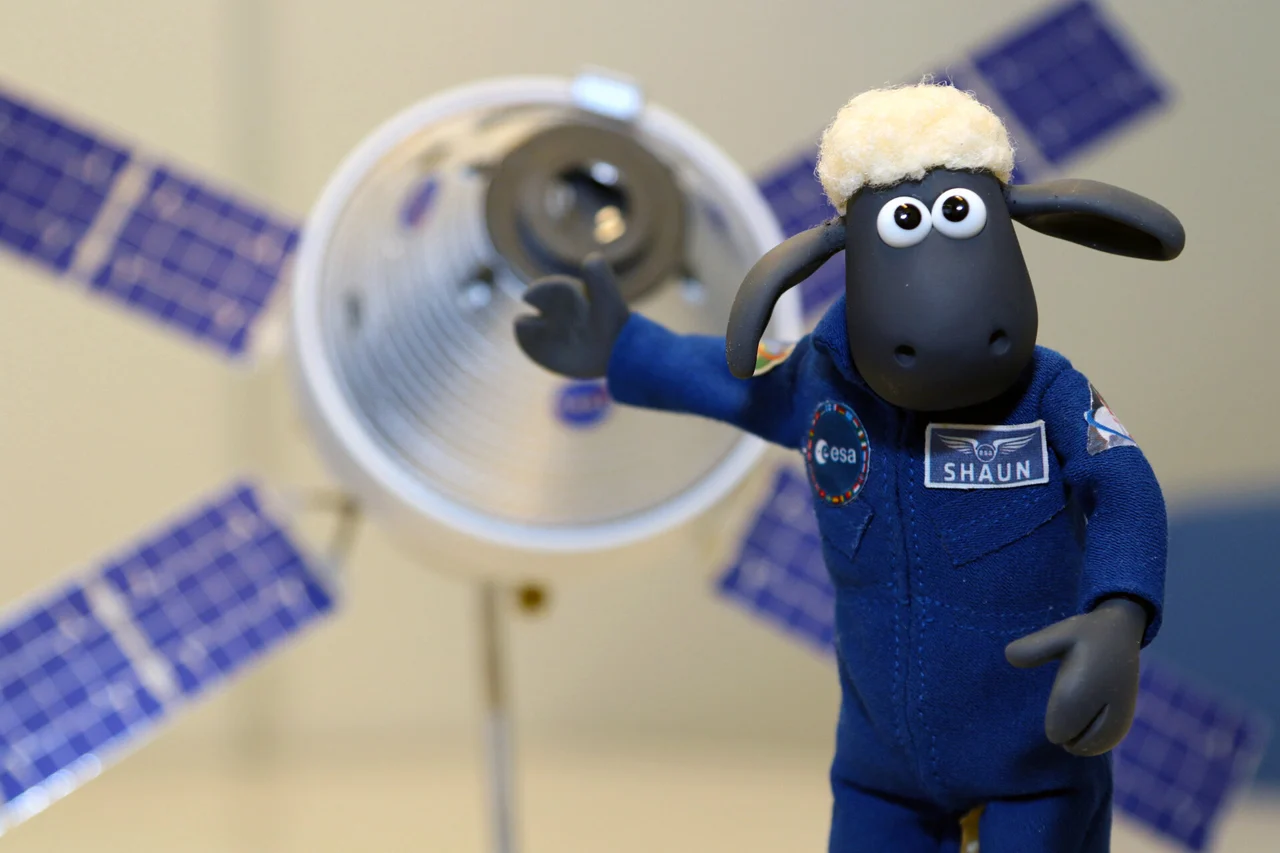
Shaun the Sheep, from the "Wallace & Gromit" claymation films and "Shaun the Sheep" TV series, poses in his ESA flight suit in front of a model of the Orion service module. Credit: ESA
Included in the collection of mementos going to space in the Artemis 1 Official Flight Kit are the rest of the Orion 'passenger' list — four LEGO minifigures, developed for LEGO Education's Build to Launch program, and a one-of-a-kind Snoopy plush that will act as the mission's zero-g indicator.
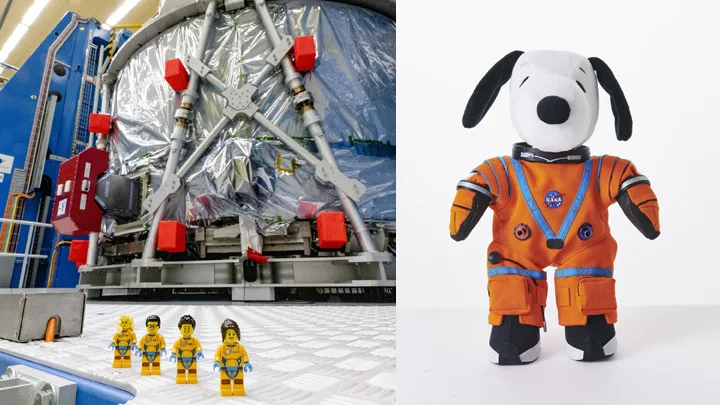
Left: four LEGO minifigures making the journey to the Moon with Artemis 1 stand in front of the Orion service module. Credit: NASA/Radislav Sinyak. Right: a unique Snoopy doll will act as the mission's zero-g indicator. Credit: 2021 Peanuts Worldwide LLC, provided by NASA
A Science Mission too!
NASA wouldn't send a mission to the Moon without including as many science payloads as they could fit on board.
In addition to the science instruments that will collect data on what the future crewed missions will experience on their flight, Orion will be carrying biology experiments and technology demonstrations.
One such demonstration, named Callisto, has a very 'Star Trek' feel to it.
Combining the technologies of Amazon's Alexa digital assistant with Cisco's Webex video conferencing system, Callisto will allow NASA controllers on the ground to retrieve information and issue orders to Orion using voice commands.
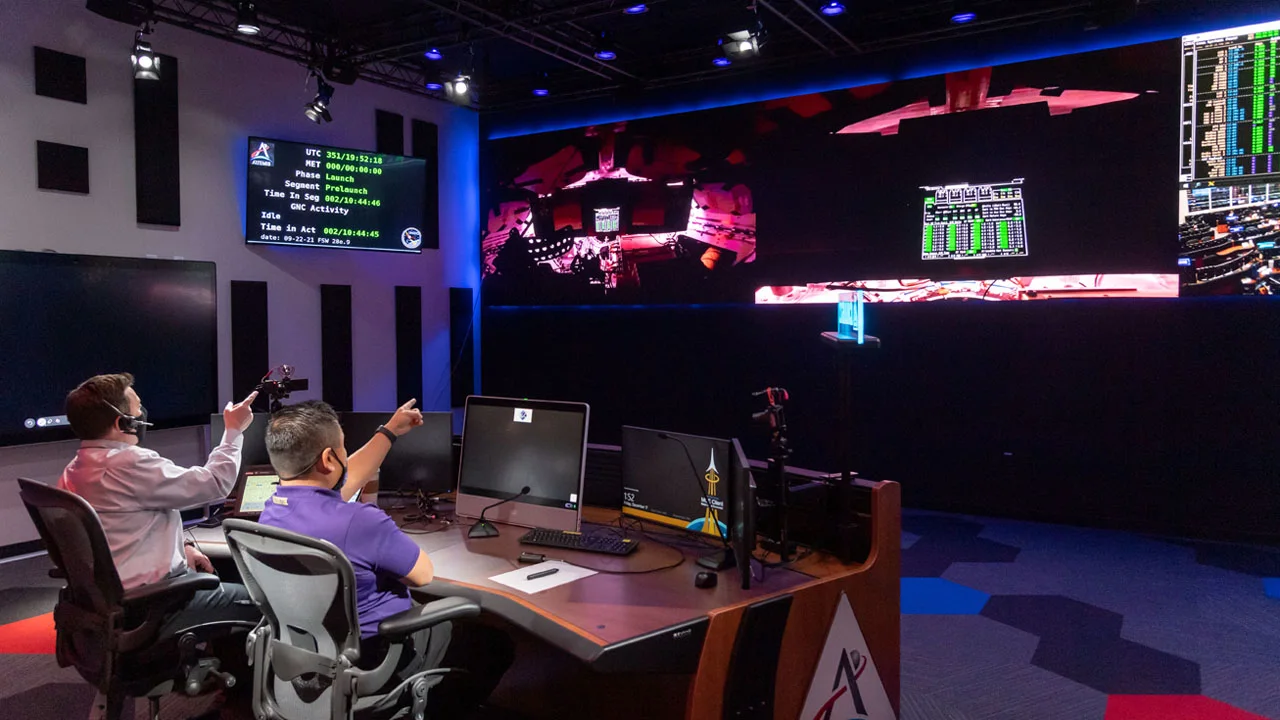
From this workstation at Mission Control in Houston, Howard Hu, the Orion deputy program manager, and Brian Jones, Lockheed Martin’s chief engineer for the Callisto project, observe signals from the Orion spacecraft at NASA's Kennedy Space Center in Florida during a test of the Callisto system. Credit: NASA
According to NASA: "Participants will assist with the demonstration by asking Alexa a question or delivering a task command in front of a console with a camera and microphone. Their images and voices will be broadcast from mission control to Orion, where video of the participants will be displayed on the tablet, and audio played from the speaker, and then Alexa will capture the audio and respond. Cameras inside the spacecraft will record the entire interaction and relay it through the network back to the room in mission control where participants can also see and hear the session."
If Callisto works, future space flights could be a bit more like flying on the starship Enterprise, as astronauts and their spacecraft share information simply by speaking to one another.
Riding to space along with Orion will be nearly a dozen cubesats, which will deploy on a variety of missions of their own, from investigating the Moon and the effects of space radiation, to demonstrating new space propulsion systems.
Watch below: NASA to send science experiments on the Artemis I mission to the Moon and back
NASA's Near-Earth Asteroid Scout (NEA Scout) will also be hitching a ride to space with Orion and SLS. After this tiny spacecraft separates from the rocket, it will shadow Orion until it reaches the Moon. At that point, it will head off on its own using a solar sail, which will use the Sun's light to propel the spacecraft towards its target — a near-Earth asteroid named 2020 GE.
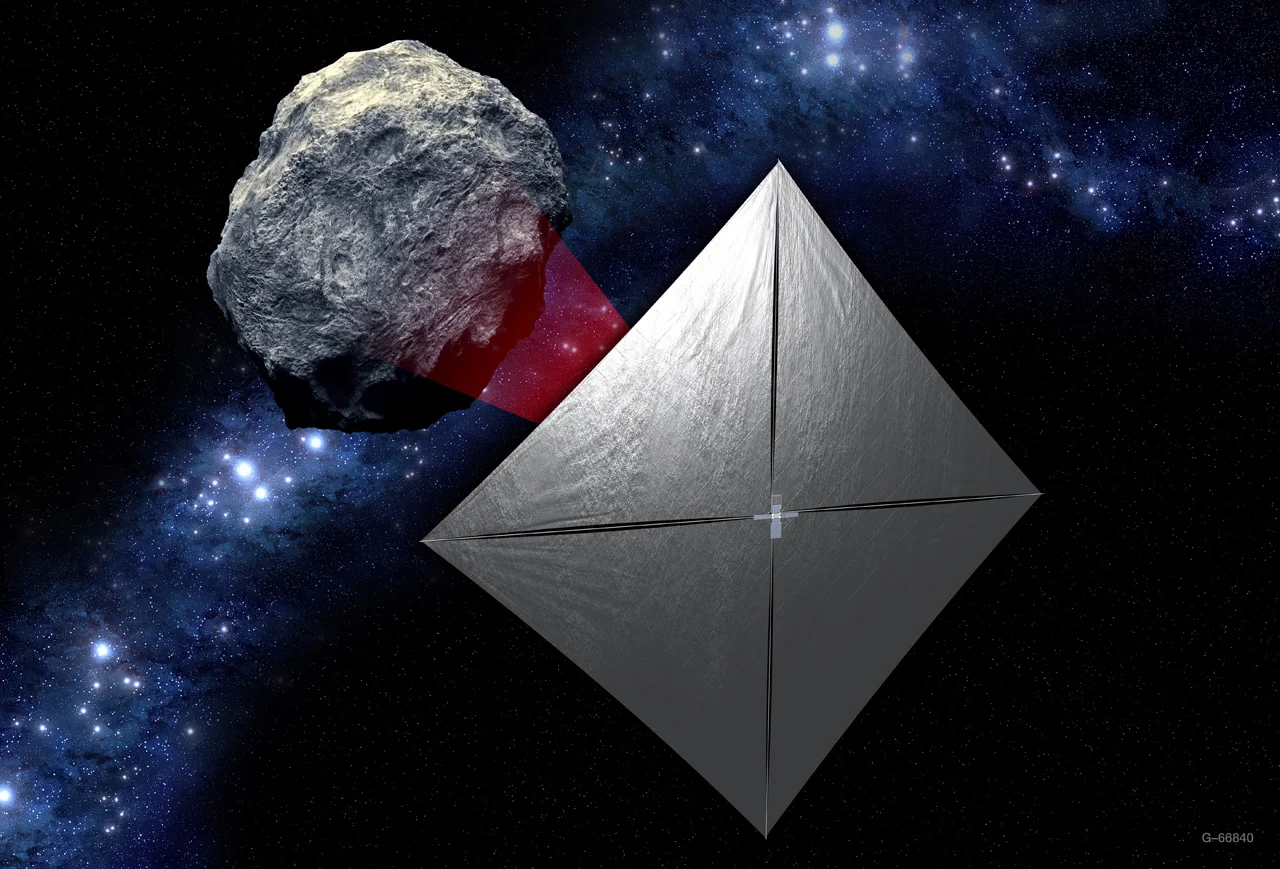
This artist's conception drawing shows NEA Scout investigating a near-Earth asteroid. Credit: NASA
According to NASA, NEA Scout will take about two years to fly roughly 150 million kilometres, or about the same distance as the Earth is from the Sun, to reach this asteroid.
"Once it reaches its destination, NEA Scout will capture a series of images of its target — ranging from 50 cm/pixels to 10 cm/pixels — which will be used by scientists on earth to better understand the object," NASA said.






